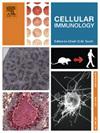MAPK14 drives Ferroptosis and immune dysfunction in pediatric Sepsis-induced acute lung injury
IF 2.9
4区 医学
Q2 CELL BIOLOGY
引用次数: 0
Abstract
Objective
Sepsis-induced acute lung injury (ALI) is driven by inflammation, oxidative stress, and immune suppression. MAPK14 (p38α) plays a role in ferroptosis and immune regulation, but its specific function in pediatric sepsis remains unclear. Therefore, our study aimed to explore the role and underlying mechanism of MAPK14 in pediatric sepsis.
Methods
Bioinformatics analysis of GSE26440 and FerrDb identified ferroptosis-related genes in pediatric sepsis. STRING database was used to predict the proteins associated with MAPK14. MAPK14 expression in whole blood samples, LPS-treated MLE-12 cells, and a CLP mouse model was detected by qRT-PCR and western blot. Ferroptosis was assessed by measuring MDA, GSH, and Fe2+ levels, while ROS accumulation was analyzed using DCFH-DA staining and DHE staining. A cycloheximide (CHX) assay was performed to assess TTP53 protein stability. MPO immunohistochemistry and PD-L1 immunofluorescence assessed neutrophil infiltration, and flow cytometry evaluated neutrophil apoptosis.
Results
Bioinformatics analysis of GSE26440 and FerrDb identified MAPK14 as a ferroptosis-related gene in pediatric sepsis. MAPK14 expression was upregulated in sepsis patient samples, LPS-treated MLE-12 cells and CLP mouse lung tissues. Overexpression of MAPK14 led to increased MDA and Fe2+ levels, reduced GSH, and elevated ROS fluorescence intensity, confirming its role in promoting ferroptosis. Mechanistically, MAPK14 upregulated TTP53, which in turn suppressed SLC7A11 and GPX4, further driving ferroptosis. MAPK14 overexpression stabilized TTP53 and enhanced its activity. Additionally, MAPK14 enhanced MPO and PD-L1 expression to promote neutrophil infiltration and immune suppression. Additionally, MAPK14 overexpression inhibited neutrophil apoptosis, promoted neutrophil infiltration and enhanced immune suppression.
Conclusion
MAPK14 drives ferroptosis via the TTP53/SLC7A11/GPX4 pathway and exacerbates immune suppression by promoting neutrophil infiltration.

MAPK14驱动儿童败血症诱导的急性肺损伤中的铁下垂和免疫功能障碍
目的脓毒症引起的急性肺损伤(ALI)是由炎症、氧化应激和免疫抑制驱动的。MAPK14 (p38α)在铁下垂和免疫调节中发挥作用,但其在儿童败血症中的具体功能尚不清楚。因此,我们的研究旨在探讨MAPK14在儿童脓毒症中的作用及其潜在机制。方法通过生物信息学分析GSE26440和FerrDb,鉴定儿童败血症中铁中毒相关基因。使用STRING数据库预测与MAPK14相关的蛋白。采用qRT-PCR和western blot检测MAPK14在全血样本、lps处理的MLE-12细胞和CLP小鼠模型中的表达。通过测定MDA、GSH和Fe2+水平来评估铁下垂,通过DCFH-DA染色和DHE染色来分析ROS积累。采用环己亚胺(CHX)测定法评估TTP53蛋白的稳定性。MPO免疫组织化学和PD-L1免疫荧光检测中性粒细胞浸润,流式细胞术检测中性粒细胞凋亡。结果GSE26440和FerrDb的生物信息学分析鉴定MAPK14是儿童败血症中铁中毒相关基因。在脓毒症患者样本、lps处理的MLE-12细胞和CLP小鼠肺组织中,MAPK14表达上调。MAPK14过表达导致MDA和Fe2+水平升高,GSH降低,ROS荧光强度升高,证实了其促进铁下垂的作用。在机制上,MAPK14上调TTP53,进而抑制SLC7A11和GPX4,进一步推动铁下垂。MAPK14过表达可以稳定TTP53并增强其活性。此外,MAPK14增强MPO和PD-L1的表达,促进中性粒细胞浸润和免疫抑制。此外,MAPK14过表达抑制中性粒细胞凋亡,促进中性粒细胞浸润,增强免疫抑制。结论mapk14通过TTP53/SLC7A11/GPX4通路驱动铁下垂,并通过促进中性粒细胞浸润加重免疫抑制。
本文章由计算机程序翻译,如有差异,请以英文原文为准。
求助全文
约1分钟内获得全文
求助全文
来源期刊

Cellular immunology
生物-免疫学
CiteScore
8.20
自引率
2.30%
发文量
102
审稿时长
30 days
期刊介绍:
Cellular Immunology publishes original investigations concerned with the immunological activities of cells in experimental or clinical situations. The scope of the journal encompasses the broad area of in vitro and in vivo studies of cellular immune responses. Purely clinical descriptive studies are not considered.
Research Areas include:
• Antigen receptor sites
• Autoimmunity
• Delayed-type hypersensitivity or cellular immunity
• Immunologic deficiency states and their reconstitution
• Immunologic surveillance and tumor immunity
• Immunomodulation
• Immunotherapy
• Lymphokines and cytokines
• Nonantibody immunity
• Parasite immunology
• Resistance to intracellular microbial and viral infection
• Thymus and lymphocyte immunobiology
• Transplantation immunology
• Tumor immunity.
 求助内容:
求助内容: 应助结果提醒方式:
应助结果提醒方式:


